Sirius Signal C-1002 & C-1003 SOS distress signal testing begins, future bright

The Sirius Signal C-1002 — the first electronic Visual Distress Signal Device (eVDSD) built to the new RTCM two color standard — is now a shipping product, and Panbo testing has commenced. Also in hand is the new C-1003, which meets the existing USCG white eVDSD standard with minor improvements over the original Sirius Signal (Weems & Plath) model that trail blazed a legal alternative to mandated pyrotechnic flares. I haven’t tested either device on the water yet, but I’m already convinced that smarter, brighter eVDSDs are here, but now with a distinct better/best choice.
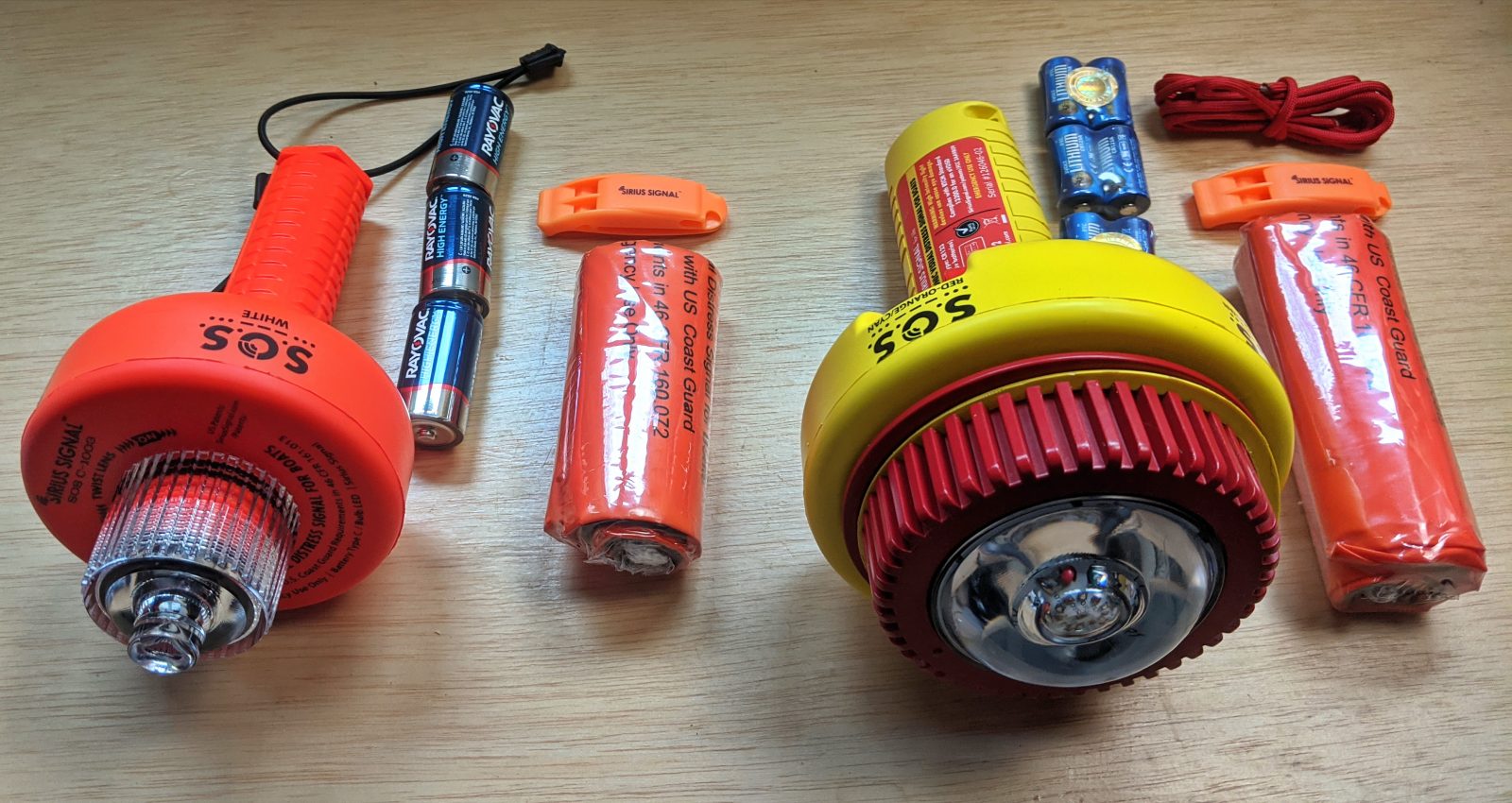
When I compared the original Sirius C-1001 to the similar Orion SOS Beacon last year, the 1001 turned out to be a better-designed safety device in almost every way. The main exception was how the Orion floated slightly higher in the water, maybe making it slightly more visible from a low point of view. That’s why the new C-1003 above has a larger float collar, and Sirius says that the re-engineering also achieved 10% more LED brightness.
I hope to confirm the C-1003’s added white LED brightness on the water soon, but I can already testify that the C-1002 is a heck of lot brighter still and the alternating red-orange/cyan colors add significant conspicuity. The two models are available at Sirius Signal’s online store — for $90 and $300 respectively — and both come with the batteries, orange daytime distress signal flag, and whistle shown above. Thus, either eVDSD comes ready to use and fulfills all USCG visual distress signal mandates as well as the audible signal requirement.
When Sirius Signal announced the C-1002 last August, I explained how the RTCM developed a more rigorous eVDSD standard — two color and super bright as modern LED technology allows — and how the USCG accepted as “equivalent” to the current all-white standard. Now let’s see what Sirius came up with and why you might want to spend three times what you have to for a safety device you will hopefully never use.
At upper left you can see the big red switch which satisfies the RTCM 13200.0 requirement that the distress signal be operable with one hand (even a neoprene gloved hand), and visible at right are the self-cleaning mechanical switch parts as well as the working end of the 24v battery pack. Note the hole in the printed circuit board that must align with the switch axel when you replace the top after a battery change. The assembly is a little tricky, especially because the RTCM also insisted on the retainer that connects the two major components, but they go together tightly once you get the hang of it.
In short, the RTCM created an eVDSD engineering challenge, and they also require that designs like C-1002 pass harsh third-party environmental testing that other approved distress signals were not subject to. These are factors in the product cost, but note too how the C-1002’s big red switch has an intermittent Bluetooth setting.
The RTCM eVDSD standard does not require Bluetooth, or the Sirius Signal app that uses it. Instead, they are Sirius’s way of making the beacon into a safety system and thus add value to the $300 price tag. And while much of what the app does can be done in other ways, I find it easy and sensible.
For instance, it’s easy to add SMS text contacts to your Check Me list — either on the fly or from your phone’s list — and they’ll receive your Start Trip (Float Plan) info as well as check-in positions with map links whenever you tap the appropriate buttons. And the contacts for an SOS message are a separate list that can include synthesized voice messages instead of texts. Plus, yes, the app includes first aid advice delivered by audio and text as you tap different body parts.
All those features work apart from the actual eVDSD, though of course cell service is needed for the messaging. But when the C-1002 is in Bluetooth mode, you’ll see that battery status icon at the bottom of the Float Plan screen (it’s quite conservative, I think), and you can also use the app to activate the light (as indicated by the main screen’s big ON button above).
While turning on the light with your phone is mainly intended for testing, it could also be useful if, say, you want to haul the C-1002 aloft on a halyard without blinding yourself in the process. In fact, anyone near the sharp brightness of this eVDSD should take the eye danger seriously, though that is also the beacon’s major feature.
At first, I thought that videos of the two lights in my dark basement shop could nicely illustrate the much greater brightness of the C-1002. But the results are so visually violent that they might be very unwelcome surprise. Hopefully this daylight version does the job more gently, and remember that the white C-1003 is purportedly brighter than the two eVDSDs I videoed on the water a year ago, both of which supposedly meet a Federal light intensity standard meant to seen from miles away. The C-1002 is BRIGHT, and I also think that the alternating colors will stand out even in a scene with lots of other lights from shore and aids to navigation.
One last thought, starting with the still chilling memory of sailing in difficult wind and wave conditions plus deep darkness near the mouth of Buzzard’s Bay when a large tug and tow seemed to turn toward a spot that we could not easily avoid. Neither VHF nor big flashlights seemed to get the operator’s attention for what seemed like eternity, but I bet a C-1002 would have.
Maybe 40 years later, I’ve been busy upgrading Gizmo Junior with one goal the ability to safely zip around the Bays at night. So when I designed an aluminum “antenna farm” plate to fit between the short radar pedestal and little radar, I included a hole that will hold the C-1002 in a position highly visible off the boat but well away from my direct sight. I can’t leave it in Bluetooth mode for extended periods without running down the battery pack — something I learned the experiential way, before reading the manual — but activating the mode and sticking the eVDSD in its socket can be a quick move if needed, and regularly running the app with Float Plans and Check Mes will be an added level of safety. More to come.


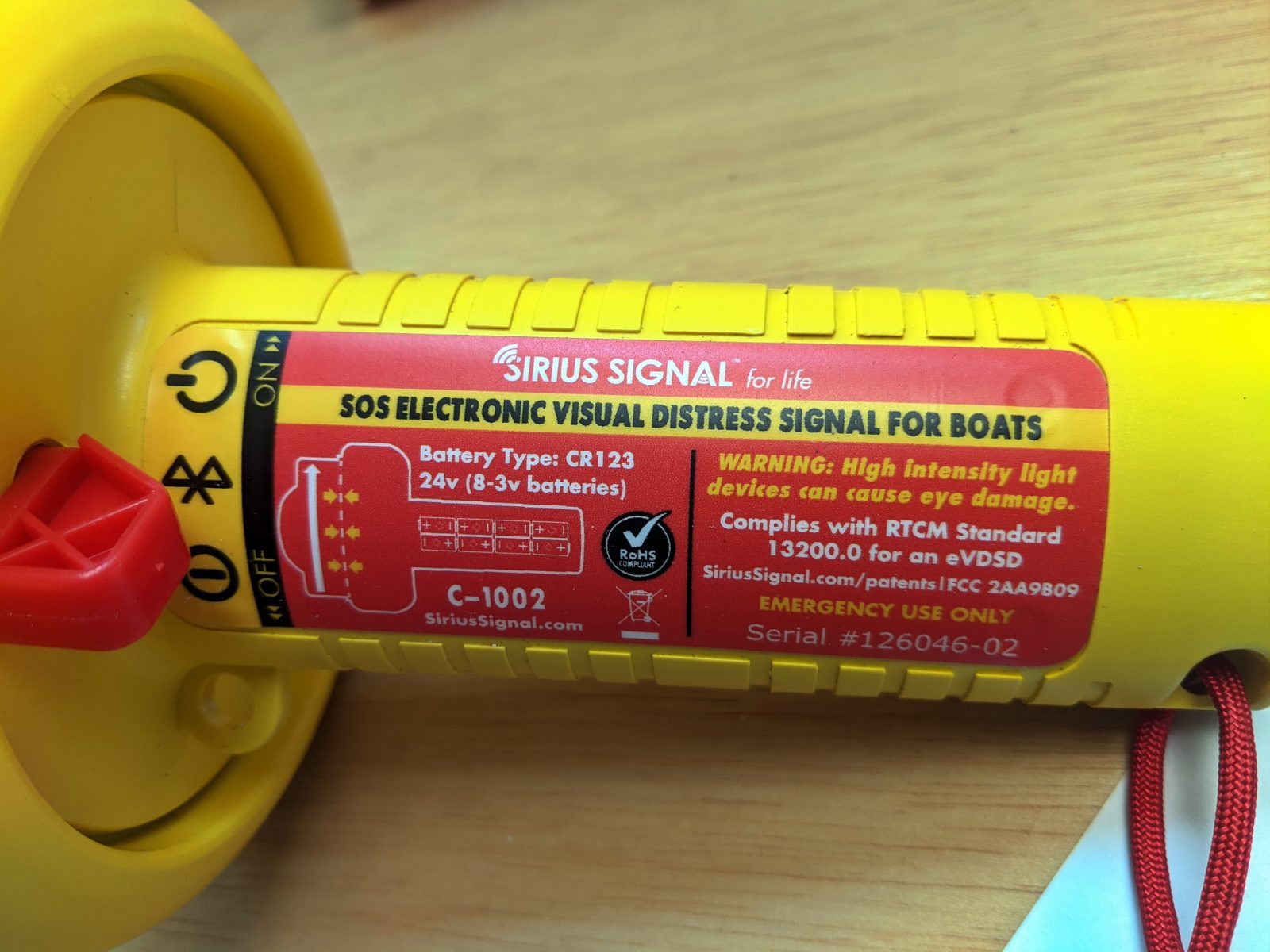
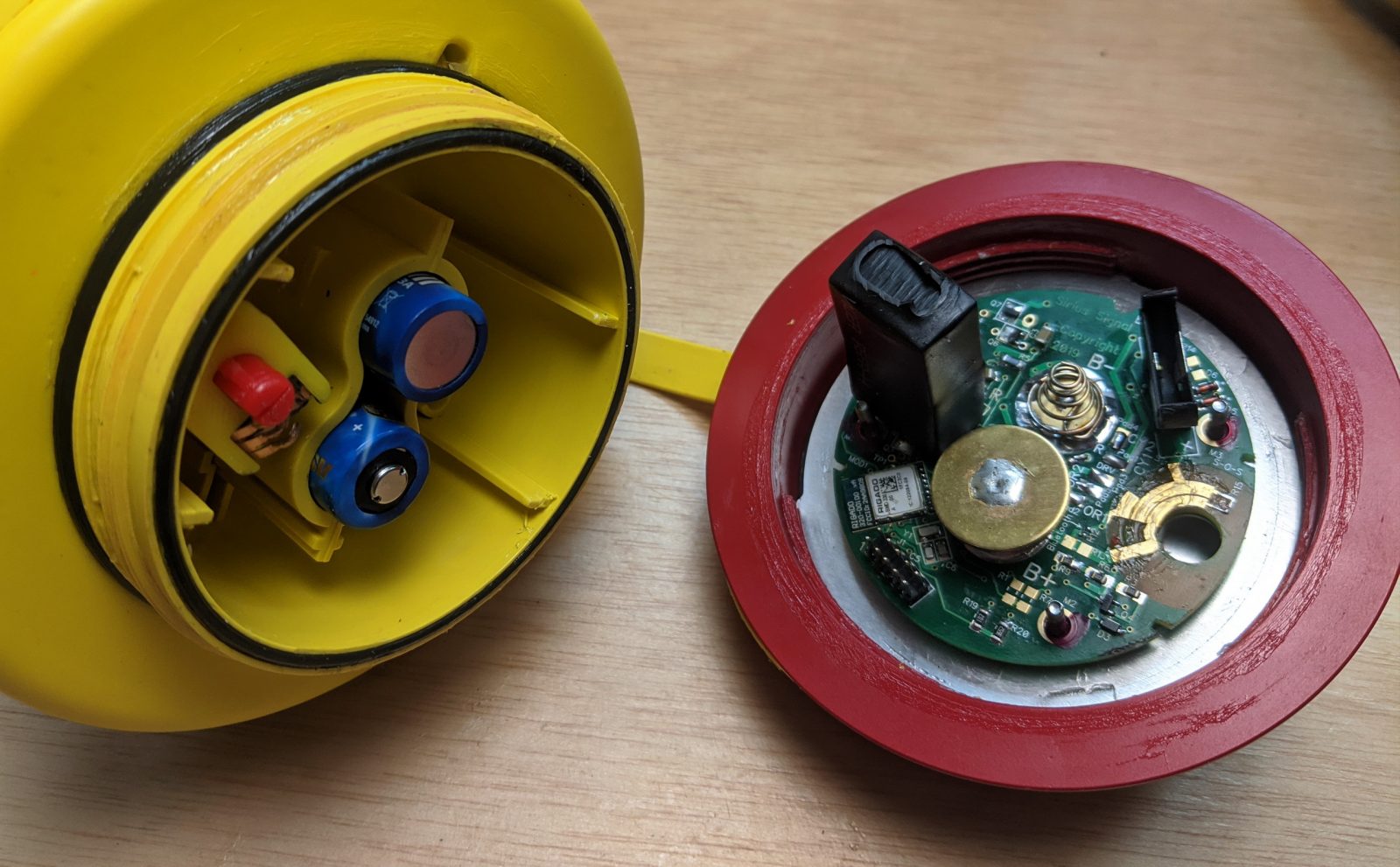
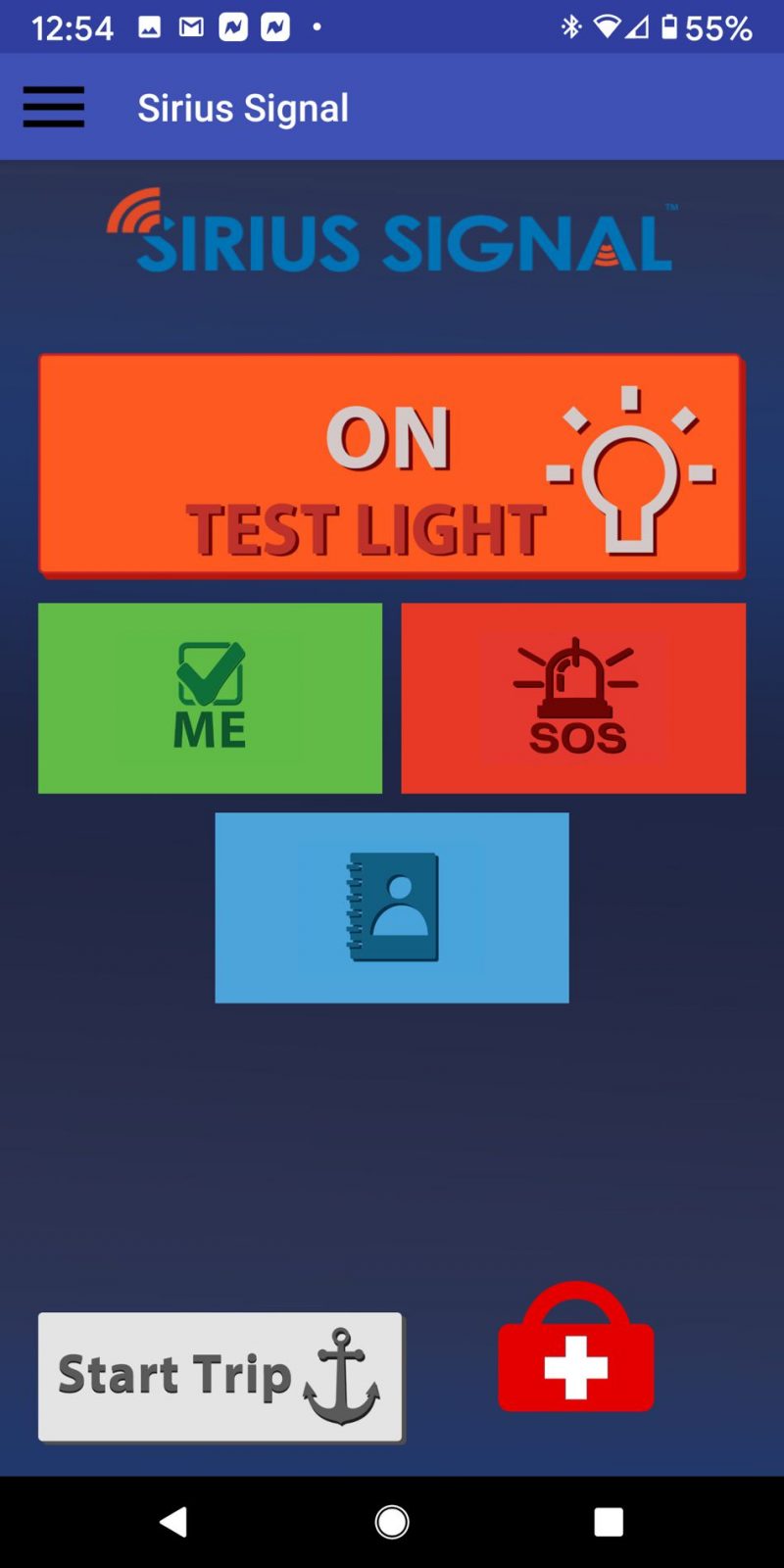
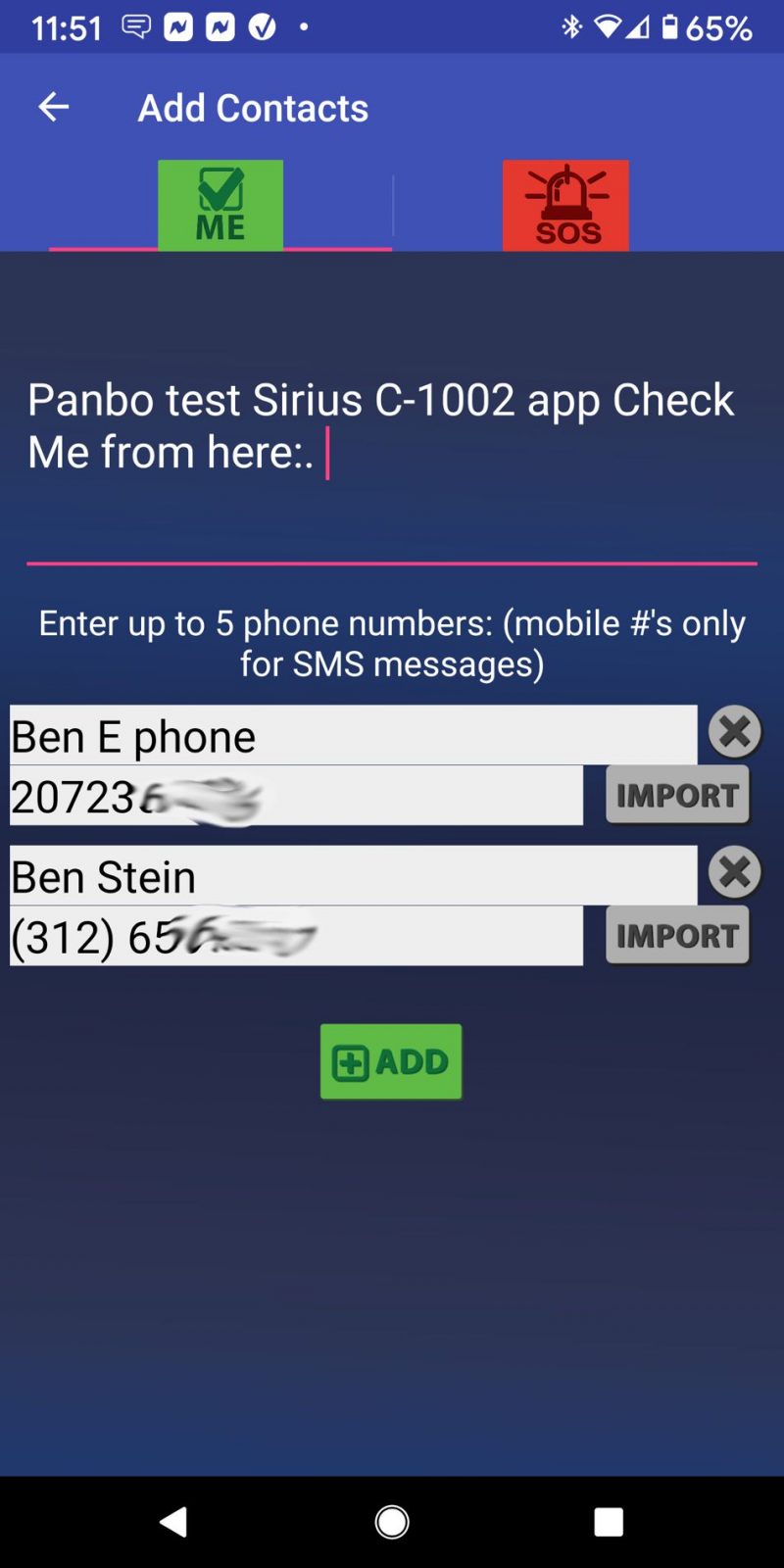



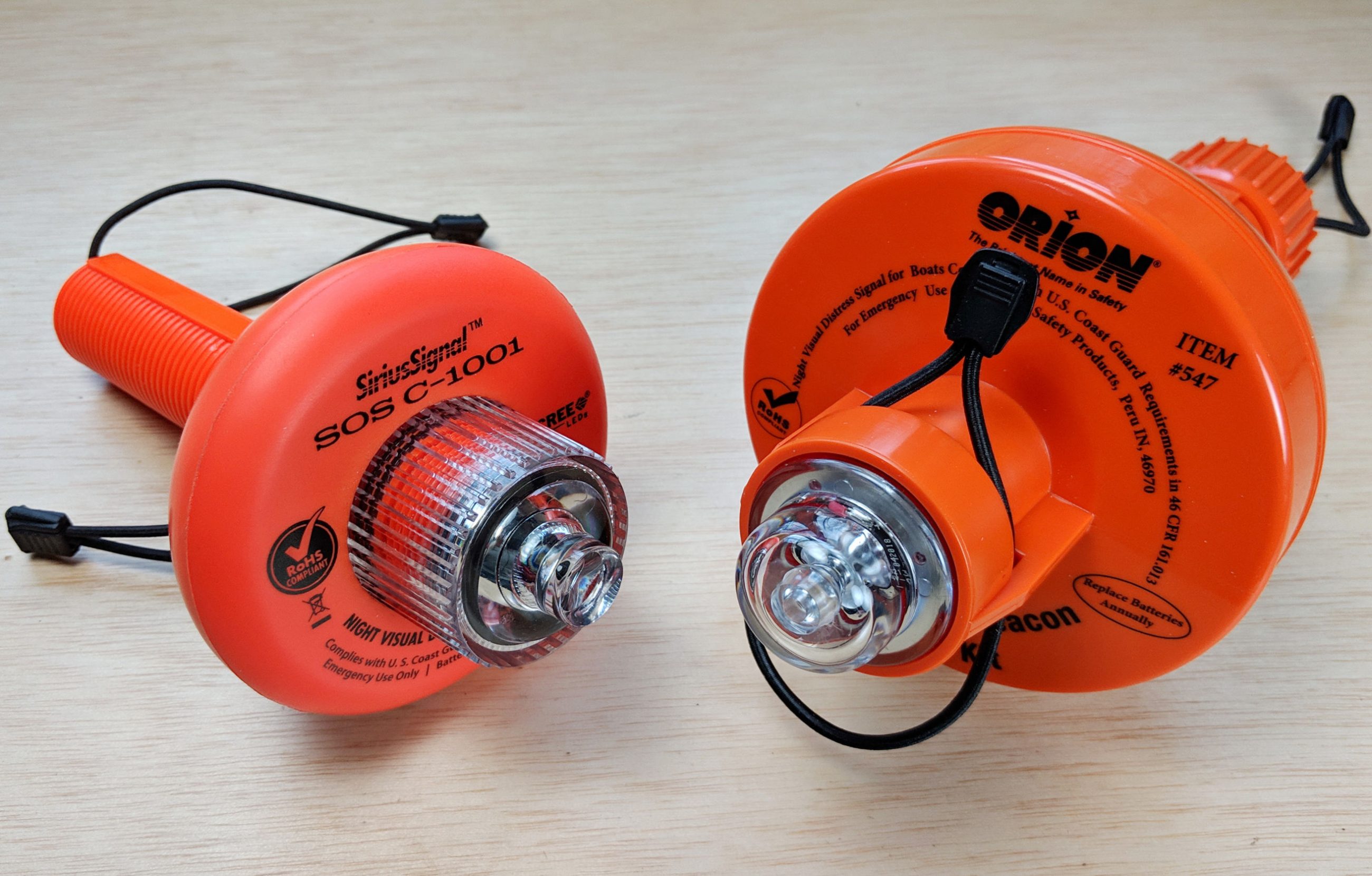
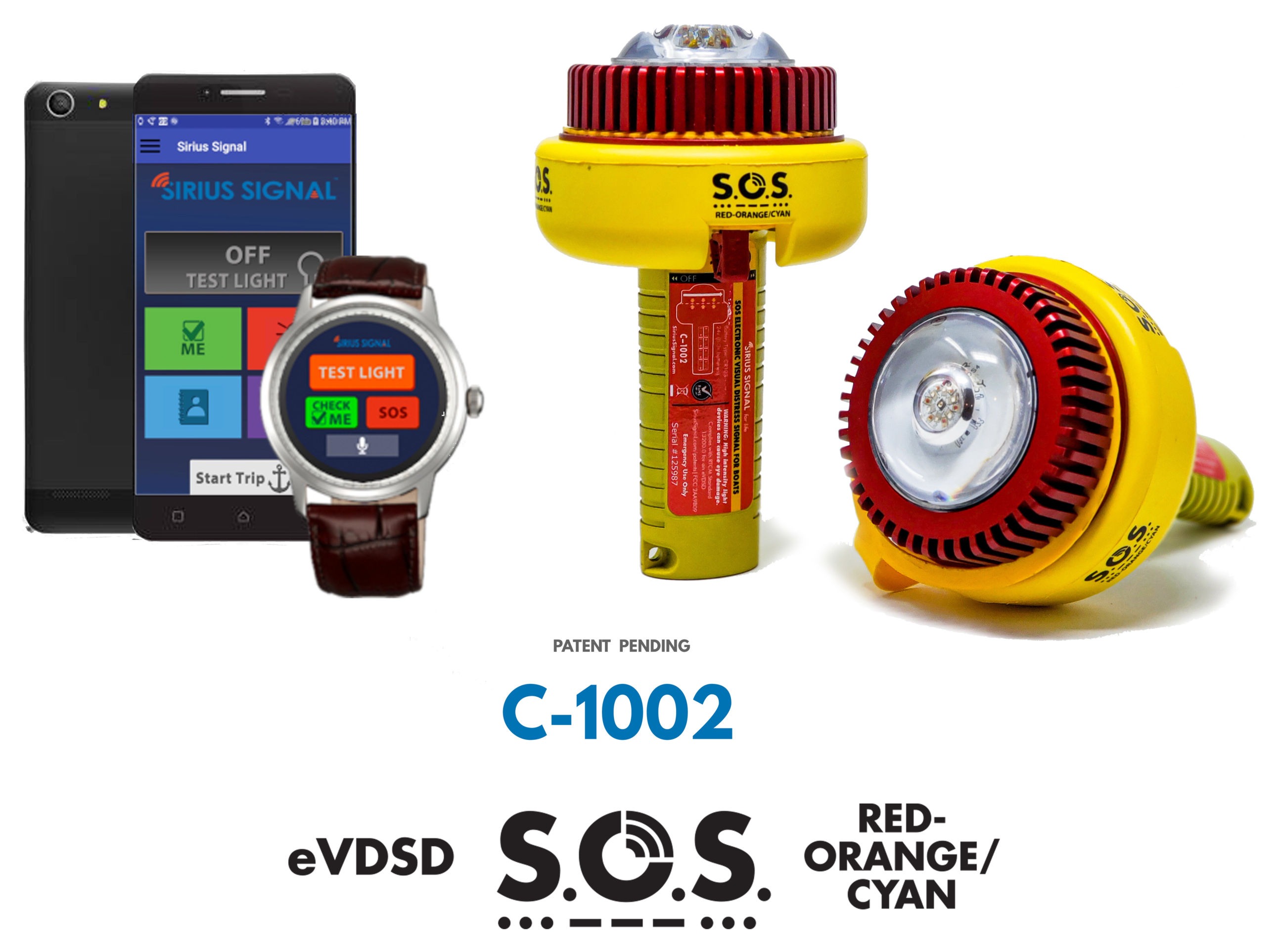
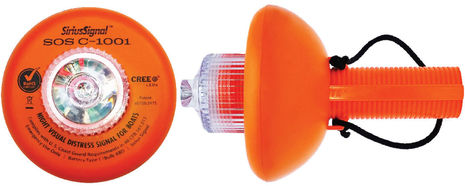








Ben,
This is indeed an exciting product with many great features.
I’ve also viewed their video and read the manual. What both your preliminary review and Sirius information seems very light on is the fact that the Alert function can only work if you are within cellphone coverage. No coverage, no hope for any emergency text message (of course, the light on the unit would still work).
In that case, one hopes the captain in distress actually filled out the Float Plan and sent it to their contacts before they lost cell coverage. If the contact(s) actually read the float plan, hopefully they will report the vessel overdue to authorities.
While I could not find any mention in the manual, I would highly recommend that any boat sending an emergency text message and/or activating the unit also use their VHF to contact the US Coast Guard.
Armand Seguin
Vallejo, CA
USCG Master
Thanks, Armand. While the cellular dependent features of the Sirius eVDSD are quite secondary to its primary function, lack of cell service could cause problems. For instance, float plans sent to friends and family along with location check-ins all seem like a good idea until you inadvertenly sail out of cell range and unnecessarily scare those friends and family. It’s a good case for having at least minimal satellite communications available, like a Garmin inReach or the new Zoleo system I’m now testing.
Also, I bet you’ll agree that marine VHF is still a primary emergency tool even though many boaters are using it less because of cell phones. I just made that point with a particularly compelling example, I think:
https://panbo.com/why-marine-vhf-and-the-call-you-never-want-to-make/
Last week I bought a Sirius C1003. I purchased it through a well known vendor and the batteries were missing. I called and left a VM at Sirius and received a response from Anthony Covelli, CEO that the batteries are on the way to my address! Awesome service when the MAN responds. Thank you very much.
Your loyal customer,
Donald
If you are looking for a white SOS electronic visual distress signal able to replace pyrotechnic flares for less than $100, the Sirius Signal C-1003, the ACR RESQFLARE, and the Orion SOS got new competition in the new Daniamant ODEO SOS eVDS, which recently got USCG approval:
https://www.datrex.com/product/daniamant-odeo-sos-flare/
But, as best I can tell, the Sirius Signal C-1002 described above is still the only eVDS built to the newer RTCM two color standard. While also still quite expensive, I suspect that the C-1002 is a significantly more visible signal, especially with shore background lighting, and this in-depth Practical Sailor comparison seems to agree:
https://www.practical-sailor.com/safety-seamanship/distress/distress-flares-go-electric
While Sirius Signal definitely trailblazed the improved two-color electronic Visual Distress Signal Device (eVDSD) standard, it’s great to learn that ACR and Ocean Signal have developed their own version, and I look forward to seeing more details:
https://www.metstrade.com/exhibitors/ocean-signal-ltd/products/acr-resqflare-pro
Specifications for the ACR ResQFlare PRO are out and look a lot like the Sirius Signal C-1002 except there’s no app to check battery state or remotely activate the light:
https://www.acrartex.com/products/resqflare-pro-boat-flare/
Is there any chance one of these newcomers has attachment points on top and bottom to be suspended from above and stabilized from below? I really don’t understand why a heavy tab isn’t included on the transparent top to which we can secure a line to suspend this from a boom or flag halyard and on the bottom to stabilize. I offered the suggestion to Sirius a while ago and have not seen it implemented.